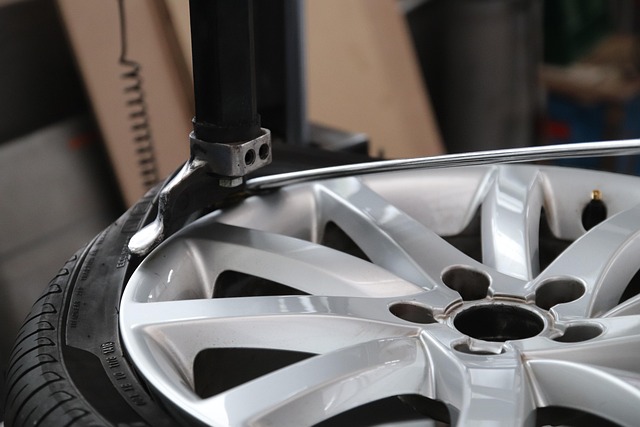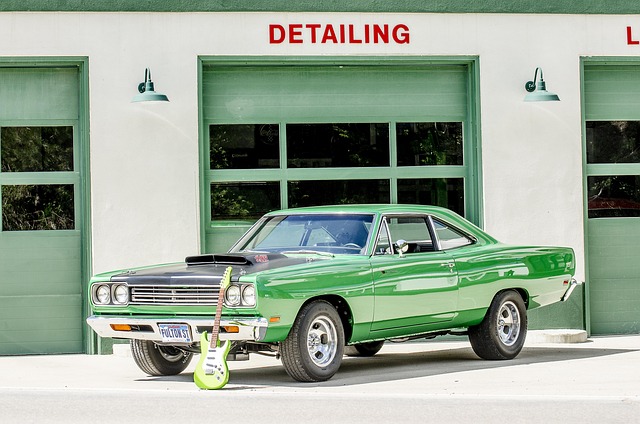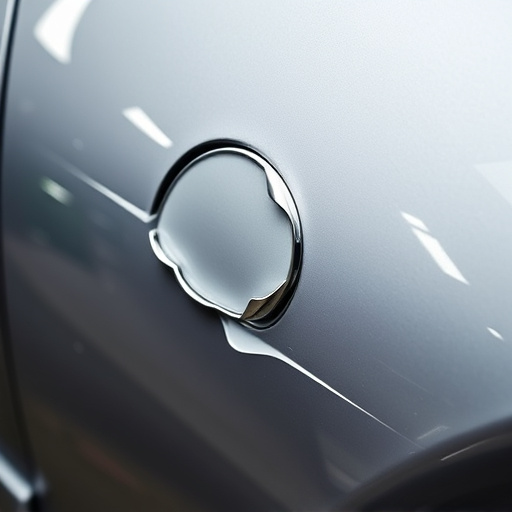Composite material replacement revolutionizes fleet vehicle maintenance, offering lightweight yet robust solutions for various components. These advanced materials provide significant advantages over traditional metals in durability, cost-effectiveness, and fuel efficiency. Specific applications include auto glass repair and frame straightening, enhancing structural integrity, crash safety, handling, and reducing vehicle weight, leading to improved fuel economy and environmental benefits. A strategic approach is crucial when adopting composites: assess fleet needs, perform cost-benefit analyses, select high-quality materials meeting safety standards, train mechanics, and partner with reliable suppliers to minimize downtime.
In today’s automotive landscape, composite material replacement is revolutionizing fleet vehicle maintenance. This article explores the growing trend of integrating advanced composites into vehicle construction, offering numerous advantages over traditional materials. From enhanced durability and reduced weight to improved fuel efficiency and lower maintenance costs, composite material replacement is a game-changer. We delve into understanding these materials, their applications in fleets, and practical strategies for successful implementation, highlighting why this shift is essential for modern transportation.
- Understanding Composite Materials and Their Applications in Fleet Vehicles
- Benefits of Replacing Traditional Materials with Composites in Fleet Vehicle Maintenance
- Practical Considerations and Implementation Strategies for Composite Material Replacement
Understanding Composite Materials and Their Applications in Fleet Vehicles

Composite materials have revolutionized various industries, and fleet vehicle maintenance is no exception. These advanced materials offer lightweight yet robust solutions for automotive components, providing significant advantages over traditional metals. In fleet vehicles, where durability, cost-effectiveness, and fuel efficiency are paramount, composite material replacement has become a game-changer. They can be used in diverse applications, from car bodywork panels to structural elements, offering enhanced performance and reduced weight.
In terms of specific uses, composites excel in auto glass repair and frame straightening processes. Their unique properties allow for precise repairs and restorations, ensuring the structural integrity of vehicles. By replacing metal components with composite alternatives during maintenance, fleet operators can benefit from improved crash safety, better handling, and reduced overall vehicle weight, leading to enhanced fuel economy and lower environmental impact.
Benefits of Replacing Traditional Materials with Composites in Fleet Vehicle Maintenance

Replacing traditional materials with composites in fleet vehicle maintenance offers a host of benefits that can significantly enhance efficiency and cost-effectiveness. One of the key advantages is the lightweight nature of composite materials, which reduces overall vehicle weight. This leads to improved fuel efficiency, as lighter vehicles require less energy to operate, thereby lowering operational costs for fleet managers.
Moreover, composites offer superior durability and resistance to corrosion compared to conventional materials. In the long run, this translates into reduced repair and replacement frequencies, minimizing downtime and saving on labor costs in vehicle body shops. The versatility of composite material replacement is particularly evident in auto body work and vehicle collision repair processes, where complex designs and shapes can be accurately replicated using advanced composite manufacturing techniques.
Practical Considerations and Implementation Strategies for Composite Material Replacement

When considering composite material replacement in fleet vehicle maintenance, several practical considerations come into play. The initial step involves assessing the current state of vehicles within the fleet, identifying those suitable for composite upgrades, and evaluating the cost-benefit analysis. This process should account for factors like the age and condition of vehicle bodywork, potential structural changes required during frame straightening, and the availability—and cost—of composite materials and labor.
Implementing composite material replacement strategies requires a structured approach. Start by researching and selecting high-quality composite solutions that align with specific vehicle needs, ensuring they meet industry standards for safety and durability. Next, develop a training program for mechanics to stay updated on best practices in composite repair and installation, particularly for intricate car restoration work. This knowledge transfer ensures consistent quality across the fleet maintenance team. Additionally, establishing partnerships with reliable suppliers can streamline the procurement process, minimizing downtime and optimizing the overall vehicle lifecycle.
The transition from traditional materials to composite replacements in fleet vehicle maintenance offers significant advantages, including lightweight construction, enhanced durability, and reduced repair costs. By understanding the unique properties of composite materials and implementing strategic replacement plans, fleet operators can optimize performance, decrease environmental impact, and ensure long-term cost savings. This innovative approach to material selection is a game-changer for efficient and sustainable transportation.













